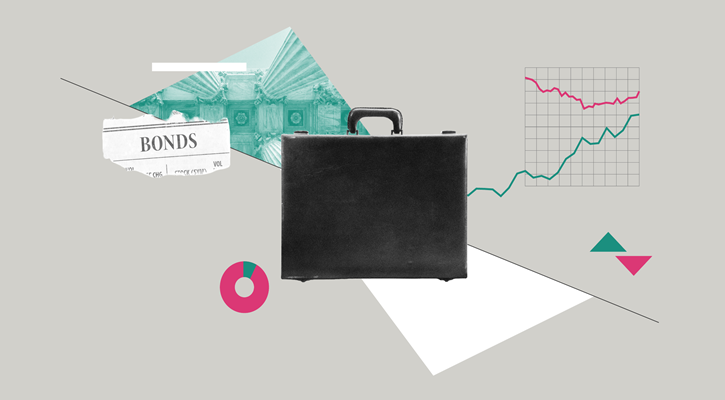Rolle im Portfolio
The iShares EURO STOXX Mid ETF provides equity exposure to eurozone mid capitalisation equities. Despite the fact that all the index’s constituent are domiciled in the Eurozone, many of them are multinational companies generating revenue around the world. Many other index constituents generate less than 50% of their revenue within Europe. As such, this investment can also be seen as a passive play on the global economy with a eurozone bias. The index constituents’ multinational exposure also explains the index’s high correlation to global stock markets. The index correlated 86% with the MSCI World USD Index over the last three years; hence its potential diversification benefits appear limited.
The ETF may be suitable for investors seeking exposure to what is a generally under-weighted segment of the market in most investor’s portfolios. According to some, the market for mid cap equities can be under-researched, under-followed, and generally less efficient than the market for small and large caps and therefore could potentially yield superior returns.
Before considering an investment, investors should review their existing portfolio holdings to avoid unintentionally creating concentrated single country exposure. This is especially the case for France and Germany which represent 29% and 12% of the index’s value, respectively.
Fundamentale Analyse
Mid-caps are often underweighted in European equity portfolios as investors and analysts tend to focus more on large- and small-cap companies. The EURO STOXX Mid Index outperformed the EURO STOXX 50 Index over the last decade by almost 4.0% per annum. The relative outperformance of mid cap equities can be attributed mainly to differences in sector exposure versus the large cap benchmark, as each sector is driven by different macroeconomic factors. Currently, the mid cap index is underweight financials relative to the EURO STOXX 50 Index. This seems to be beneficial given the debt crisis still plaguing Europe, which particularly weighs on bank shares.
The industrials sector - the index’s largest sector exposure - is dominated by companies from Germany, the Netherlands and France. Industrial production in the Eurozone was up 1.0% m/m in August according to Eurostat, with production of capital goods in particular contributing to the increase. However, latest survey data from the Eurozone have revealed more of a mixed picture, with France’s performance clearly slipping, particularly in relation to Germany’s. Having said that, the outlook for the global industrial economy has certainly improved, with the purchasing manager index (PMI) rising at its fastest pace in over two years to hit 52.1 in October. In particular, a surge in new orders contributed to the positive outcome.
Consumer services and consumer goods firms represent 12.1% and 7.5% of the index’s value, respectively. This sector’s performance still suffers from an Eurozone economy where domestic demand remains depressed overall. Besides, the disinflation environment currently experienced by the Eurozone could thwart the recovery of consumer demand, as new purchases might be postponed. In fact, recent data for the consumer sector has been rather negative. Retail trade dropped by 0.6% m/m in the Eurozone in September. According to Eurostat, the overall gap between retail trade within the Eurozone and the EU has continued to widen since the financial crisis, highlighting the pressures facing Eurozone consumers. Moreover, the Eurozone unemployment rate remained at record high of 12.2% in October. In particular, the high level of youth unemployment has become a serious concern both at an economic and political level.
Overall, the Eurozone economy seems to be slowly emerging from recession. However, a slowdown in emerging markets, a continuing troubled credit market and high unemployment remain a threat to a full recovery. In addition, the very low inflation – Eurozone HICP dropped to 0.7% in October – has raised deflationary concerns. As a result, the ECB cut its key interest rates to a historical low of 0.25% at its November meeting.
The European Commission (EC) has reduced its GDP growth forecast for 2014 from 1.2% to 1.1%, while forecasting a contraction of 0.4% for 2013. However, overall, the EC shares the view that the European economy has reached a turning point; citing the fiscal consolidation (e.g. the EC forecasts the Eurozone budget deficit to drop to 2.4% by 2015 from 3.1% in 2013) and structural reforms undertaken in many European countries as setting the basis for a future solid recovery.
Indexkonstruktion
The EURO STOXX Mid Index represents eurozone stocks from the STOXX Europe Mid 200 Index. The STOXX Europe Mid 200 Index universe is defined as the 201st to 400th largest stock of the STOXX Europe 600 Index, which is a free float market capitalisation weighted index representing 11 sectors across 11 countries. The EURO STOXX Mid index includes about 100 stocks, caps each holding at 20% and is reviewed quarterly. As of writing the index’s largest single country exposure is France (29% of the index’s value), followed by Germany (12%) and Spain (12%). The biggest sector concentration is industrials (25%), followed by financials (18%) and consumer services (12%).
Fondskonstruktion
The iShares EURO STOXX Mid ETF uses physical replication to track its reference index. The fund intends to invest in all of the constituents of the EURO STOXX Mid Index in the same weightings as in the index. iShares may engage in securities lending within this fund to generate additional revenues for the fund. The lending revenues generated from this activity are split 60/40 between the fund and the lending agent BlackRock, whereby BlackRock covers the costs involved. To protect the fund from a borrower’s default, BlackRock takes collateral greater than the loan value. Collateral levels vary from 102.5% to 112% of the value of securities on loan, depending on the assets provided by the borrower as collateral. Additional counterparty risk mitigation measures include borrower default indemnification. Specifically, BlackRock commits to replace the securities that a borrower would fail to return. The indemnification arrangement is subject to changes, and in some cases without notice. Finally, BackRock limits the amount of assets that can be lent out by this ETF at 50%.Cash received as dividends from the underlying stocks is held in the fund’s income account until it is distributed to fund holders. Distributions are made on a quarterly basis. This dividend treatment can potentially create a drag on returns in upward trending markets as dividends are not reinvested into the fund. In practice this cuts both ways. It could also result in outperformance if the benchmark falls in the interim period.
Gebühren
The fund levies a total expense ratio of 0.40% making it the cheapest of the two ETFs tracking Eurozone mid cap companies. Other potential costs associated with holding this fund which are not included in the TER include rebalancing costs, bid-ask spreads and brokerage fees.
Alternativen
As of this writing, there is only one alternative ETF tracking eurozone mid-capitalisation equities. The iShares MSCI EMU Mid Cap uses full replication and levies a TER of 0.49%. The sector allocation of the MSCI EMU Mid Cap Index is similar to the one of the EURO STOXX Mid Index. However, the MSCI EMU Mid Cap Index is more biased towards France, representing 31% of the index’s value. Moreover, there are a few ETFs providing broader European exposure to this market segment. The largest in terms of total assets under management is the iShares STOXX Europe Mid 200 ETF (DE), tracking 200 mid cap equities from across Europe. This ETF uses physical replication and offers a more diversified exposure. This alternative is especially suitable for investors with a strong view on the UK economy as the country represents 27% of the index’s value.

















